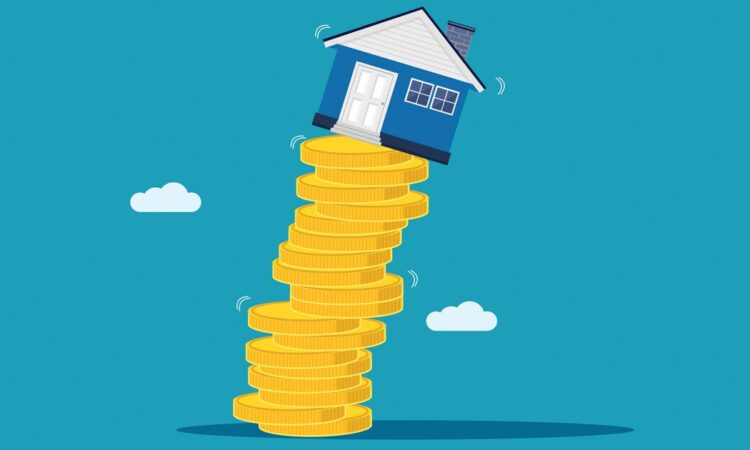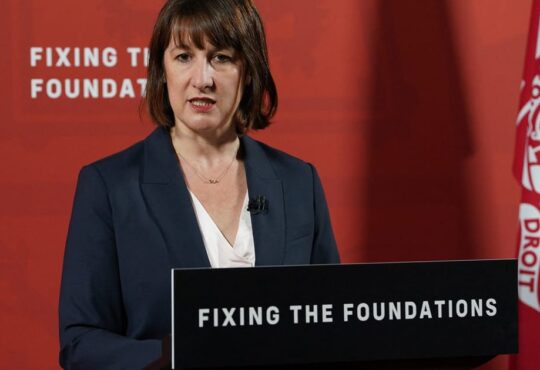
What’s old is new again: Mortgage rates soared past 7% for the first time since last year, according to recent real estate market data, making homes even less affordable after more than a year of historically high inflation.
The national average rate for the standard 30-year fixed mortgage surged to 7.14% on May 26, according to Mortgage News Daily. That’s nearly 2% higher than the same time last year and the highest daily rate since November.
DEBT LIMIT: HOW THE COMPROMISE COMPARES TO THE ORIGINAL GOP DEBT CEILING BILL
Weekly figures from the Federal Home Loan Mortgage Corporation, or Freddie Mac, also show that mortgage rates continued to rise. The U.S. weekly average was 6.57% as of May 25, a 1.47% increase compared to one year ago.
“The U.S. economy is showing continued resilience which, combined with debt ceiling concerns, led to higher mortgage rates this week,” Freddie Mac said. “Dampened affordability remains an issue for interested homebuyers and homeowners seem unwilling to lose their low rate and put their home on the market.”
“If this predicament continues to limit supply, it could open up an opportunity for builders to help address the country’s housing shortage,” the firm added.
Online real estate brokerage Redfin said debate over a debt ceiling deal in Washington has contributed to higher rates. “Mortgage rates have increased over the past two weeks because it looks more likely that the U.S. government will avoid hitting the debt ceiling,” Redfin economics research lead Chen Zhao said in a press release. “That may seem counterintuitive, but optimism is driving rates up because an economic crisis would lead to the Fed lowering rates as they try to prevent a recession.”
“Financial markets felt the risk of default was unusually high for the last month or so, which caused rates to stay lower than they otherwise would have been,” Zhao continued. “Now that Democrats and Republicans have come to the negotiating table and are making some progress toward a deal, rates are going up.”
Meanwhile, personal finance firm Bankrate also reported higher average weekly mortgage rates and pointed to stubbornly high inflation figures as a central cause, in addition to the rocky debt ceiling negotiations. “With inflation still surging and a political crisis looming, mortgage rates increased again this week,” the company said on May 31, citing its national survey of large lenders. “The average interest rate on 30-year mortgages rose to 6.9 percent, up from 6.84 percent last week.”
The swelling mortgage rates reflect the broader effects of the political chaos in Congress, persistent inflation, and the economy’s surprising resilience of late — as well as the U.S. Federal Reserve’s aggressive efforts to stabilize prices.
Though inflation has in recent months shown some promising indications of relenting from the record highs reached in 2022, prices overall, including home prices, remain elevated compared to pre-pandemic figures. The Fed has slowed its campaign to raise interest rates as a result of early positive signs, but recent data have suggested the U.S. central bank could approve further rate increases.
The Department of Commerce reported on May 26 that the personal consumption expenditures price index, a key measure of inflation closely monitored by the Fed, rose 0.4% last month, surpassing expectations, per CNBC.
“Inflation is still running too high, and recent economic data is beginning to convince investors that the Federal Reserve will not be cutting rates anytime soon,” said Mike Fratantoni, chief economist at the Mortgage Bankers Association.
Mortgage applications were down 3.7% compared to a week prior due to steeper rates, according to the Mortgage Bankers Association’s survey for the week ending May 26. “Mortgage rates for conforming, balance 30-year loans were being quoted above 7 percent by some lenders last week, and the weekly average at 6.9 percent reached the highest level since last November,” Fratantoni said. “Application volumes for both purchase and refinance loans decreased last week due to these higher rates. While refinance demand is almost entirely driven by the level of rates, purchase volume continues to be constrained by the lack of homes on the market.”
Redfin also said higher rates were associated with less activity in the housing market. “The rate increase dampened homebuying demand,” Redfin said. “Pending home sales dropped 17.4% nationwide from a year earlier during the four weeks ending May 21, the second-biggest dip since January (the biggest was a 17.5% decline in early April). Mortgage-purchase applications declined too, dropping 4% from the week before.”
“Potential sellers continued backing off, with new listings of homes for sale dropping 24%, one of the biggest declines since May 2020,” the company added. “That’s because homeowners continue to hang onto their homes, locked in by comparatively low rates. Even though demand is down, it’s still outpacing supply as the new-listing drought has caused the total number of homes for sale to post an annual decline (-0.9% YoY) for the first time in nearly a year.”
The elevated mortgage rates have also made homebuying even less affordable for many in the U.S. “The national median family income for 2022 was $90,000, according to the U.S. Department of Housing and Urban Development, and the median price of an existing home sold in April 2023 was $388,800, according to the National Association of Realtors,” the Bankrate report said. “Based on a 20 percent down payment and a mortgage rate of 6.9 percent, the monthly payment of $2,048 amounts to 27 percent of the typical family’s monthly income.”
That’s significantly more than last year, Bankrate said. “A year ago, median family income was $79,900, the median home price was $364,600 and the average mortgage rate was 3.4 percent,” the company said. “Buying the typical home then required just 19 percent of a family’s monthly income.”
Still, some buyers are continuing to look for new homes, Redfin says. “Despite rates jumping past 7% and a lack of new listings, many early-stage homebuyers remain committed,” the firm reported. “Redfin’s Homebuyer Demand Index, which measures requests for tours and other services from Redfin agents, increased from a week earlier and is essentially flat (-1%) from a year earlier. Some of these house hunters are likely to continue moving forward, while others may wait for rates to decline before securing loans.”
“We may see a burst of pent-up demand when and if rates dip again,” the company added.
Though some Redfin clients are stepping back from their searches in light of higher rates, others are simply looking for less expensive homes, agents said. “Rates hitting 7% is pushing some homebuyers entirely out of the market, especially those with lower budgets,” Redfin Premier agent Bliss Ong was quoted as saying in the company’s press release.
“But a lot of them are just pushing their price range down,” Ong said. “The 7% number isn’t scaring away buyers as much as it did back in the fall. The housing market is different now because buyers are used to rates in the 6% range, and some of them are even motivated to secure a loan now in case rates rise further.”
Though the Fed doesn’t set mortgage rates itself, its monetary policy “guides the mortgage market,” Bankrate said, and the “relevant benchmark is the 10-year Treasury yield, which has bounced around in recent weeks.”
Greg McBride, Bankrate’s chief financial analyst, said in the report that mortgage rates “respond to the outlook for the economy and inflation,” meaning a “slowing economy and an easing of inflation pressures are the prerequisites for lower mortgage rates.”
Daily average mortgage rates have in recent days dropped down slightly from their latest peaks, but experts warn that more volatility is likely on the horizon as additional economic data come in and the Fed decides whether to approve another rate increase this month.
The national average rate for a 30-year fixed mortgage dipped to 6.88% on May 31, marking a nearly two-week low, according to Mortgage News Daily.
“The credit for the rate reversal is multifaceted,” wrote Matthew Graham, MND’s chief operating officer. “The move began in Europe where friendly inflation data added to an even sharper drop in rates. As is often the case, European rate momentum has an effect on US rate momentum.”
“Traders are also feeling more confident about re-entering the market for US Treasuries — the foundation of interest rates in the US — as the debt ceiling debate progresses,” Graham said.
“If there’s one important takeaway, however, it’s that the next big move for rates remains up for debate,” he said. “Upcoming economic reports will set the tone for the Fed meeting in 2 weeks. Several Fed officials commented that they were thinking about ‘skipping’ a rate hike at the upcoming meeting. Others have recently said they would like to hike again. Both sides of the debate may change their minds by June 14th, depending on the data.”
CLICK HERE TO READ MORE FROM THE WASHINGTON EXAMINER
Zillow, another online real estate company, pointed to recent progress on raising the debt ceiling as a cause behind lower rates. “Uncertainty over a potential debt crisis had caused investors to pull back in recent weeks and mortgage rates to rise as a result,” said Orphe Divounguy, senior macroeconomist at Zillow Home Loans. “Unsurprisingly, news of a potential resolution is supporting bond-buying activity causing yields — and mortgage rates that follow them — to fall.
But like Graham, Divounguy warned that more turbulence could be on the horizon. “While the decline in mortgage rates is good news for potential home buyers frustrated with affordability challenges, mortgage rates remain elevated and volatile,” he wrote. “The primary reason for this is that recent economic data continue to point to persistent inflation pressures, which could prompt the Fed to further tighten monetary policy.”






